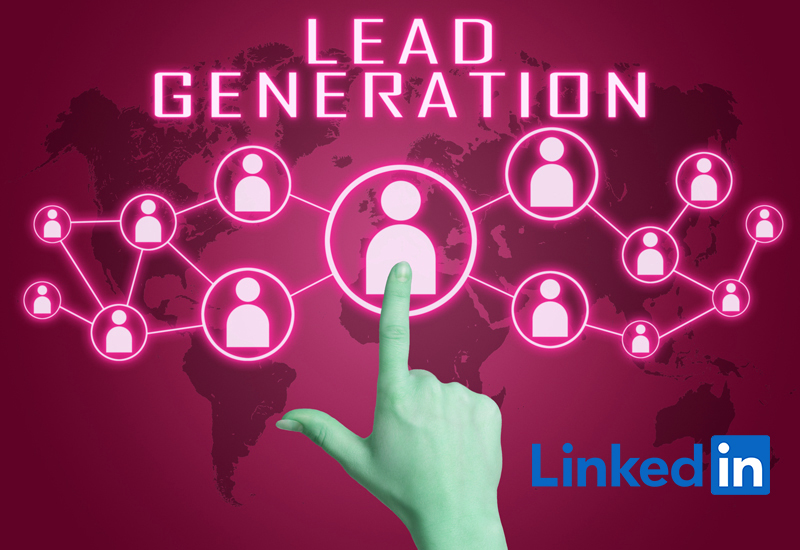Introduction
In the digital age, where networking and business connections thrive on virtual platforms, LinkedIn has emerged as a powerhouse for professionals and businesses to establish meaningful connections, showcase expertise, and drive growth. Among its manifold utilities, LinkedIn offers an exceptional opportunity for lead generation, allowing businesses to connect with potential clients, partners, and collaborators. In this comprehensive guide, we delve into the art and science of LinkedIn lead generation, unraveling strategies and best practices that can help businesses harness the full potential of this platform.
I. Understanding LinkedIn Lead Generation
LinkedIn, often referred to as the “professional social network,” is home to over 774 million users worldwide. It is a platform where professionals connect, interact, and share insights. However, LinkedIn is not just a platform for personal branding and networking; it is also a goldmine for lead generation. LinkedIn lead generation involves the process of identifying, attracting, and nurturing potential clients or customers through the platform. It’s about building relationships and converting connections into valuable leads that can contribute to business growth.

II. Optimizing Your LinkedIn Profile
A strong foundation is essential for successful lead generation on LinkedIn. Your profile serves as your digital business card, and it should reflect your expertise, credibility, and authenticity. Here are key elements to focus on:
- Profile Picture: Choose a professional, high-resolution image that presents you in a friendly and approachable manner.
- Headline: Craft a compelling headline that clearly states your role, industry, and value proposition.
- Summary: Write a concise yet engaging summary that highlights your skills, experiences, and what you bring to the table.
- Experience and Achievements: Showcase your professional journey, highlighting key accomplishments and projects.
- Skills and Endorsements: Select relevant skills and encourage endorsements from colleagues and connections.
III. Building Your Network Strategically
While quantity matters to some extent, quality should be your priority when building connections on LinkedIn. Here’s how to strategically expand your network:
- Target Audience: Define your target audience based on industry, job titles, and other relevant criteria.
- Personalized Connection Requests: When sending connection requests, personalize your messages to explain your reason for connecting.
- Engagement: Regularly engage with your network through thoughtful comments, shares, and likes.
IV. Content Creation and Sharing
Consistent, valuable content is the backbone of successful lead generation on LinkedIn. By sharing insights, tips, and industry knowledge, you position yourself as a thought leader and attract potential leads. Consider these content strategies:
- Original Articles: Write and share articles that address industry challenges, offer solutions, or provide valuable insights.
- Posts and Updates: Share short, engaging posts about industry trends, news, or personal experiences.
- Multimedia Content: Incorporate videos, infographics, and other visual content to make your posts more engaging.
V. Leveraging LinkedIn Features
LinkedIn offers several features and tools that can supercharge your lead generation efforts:
- LinkedIn Sales Navigator: This premium tool helps you identify and reach out to potential leads more effectively.
- LinkedIn Ads: Run targeted advertising campaigns to reach your ideal audience.
- LinkedIn Groups: Join and participate in relevant groups to connect with like-minded professionals.
VI. Connecting and Nurturing Leads
Connecting with leads is just the beginning; nurturing these connections is crucial for conversion. Consider these strategies:
- Personalized Messaging: Reach out to potential leads with personalized messages that address their specific pain points.
- Relationship Building: Focus on building a genuine relationship before jumping into a sales pitch.
- Value-Driven Communication: Share valuable resources, insights, and solutions to establish trust.
VII. Tracking and Measuring Success
To refine your LinkedIn lead generation strategy, you must measure your efforts. Track metrics such as:
- Connection Growth: Monitor the growth of your network over time.
- Engagement: Measure the engagement (likes, comments, shares) on your posts.
- Conversion Rate: Track how many leads convert into actual clients or customers.
VIII. Avoiding Common Mistakes
In the pursuit of lead generation, several pitfalls should be avoided:
- Over-Promotion: Excessive self-promotion can turn potential leads away.
- Ignoring Engagement: Failing to engage with your network can hinder relationship-building.
- Lack of Consistency: Inconsistent posting and engagement can diminish your visibility.
Conclusion
LinkedIn lead generation is a powerful strategy for businesses and professionals looking to expand their networks and drive growth. By optimizing your profile, strategically building connections, creating valuable content, and nurturing relationships, you can effectively convert connections into valuable leads. Remember, successful lead generation requires patience, authenticity, and a genuine commitment to adding value to your network. As you navigate the intricate landscape of LinkedIn, keep these strategies in mind to harness the full potential of this platform and take your lead generation efforts to new heights.

